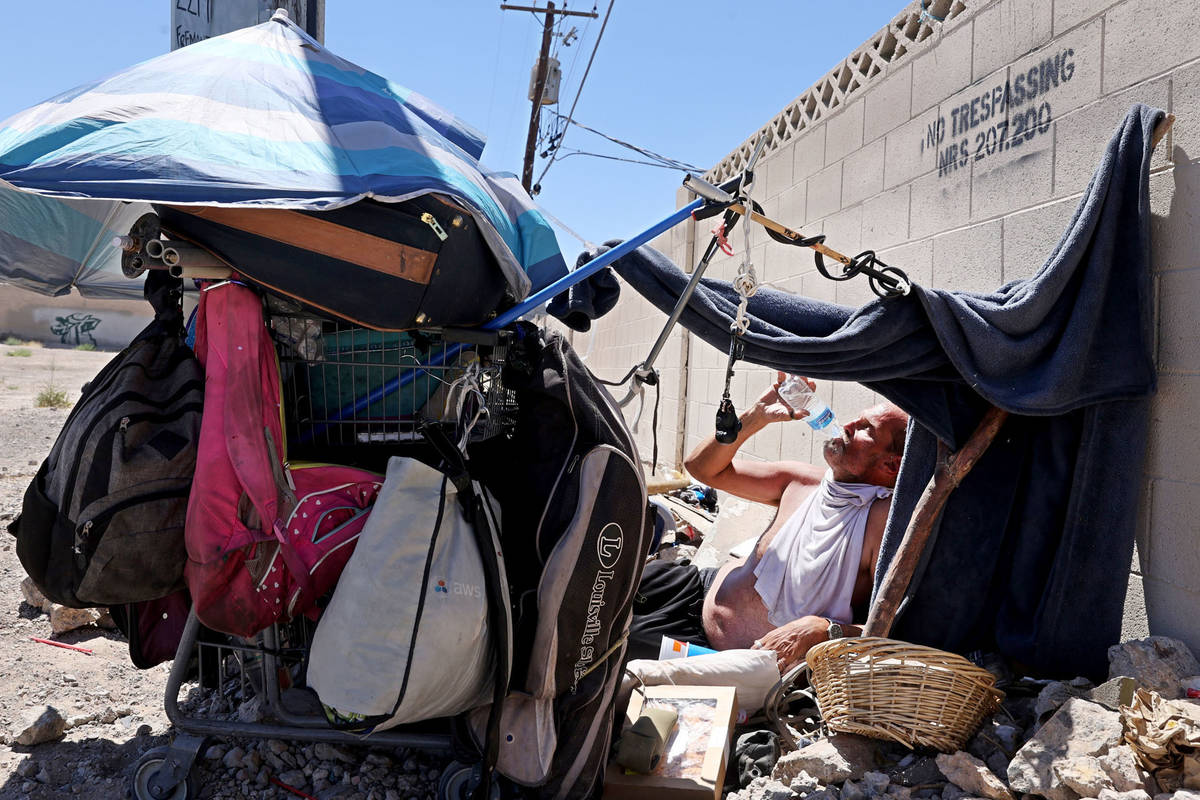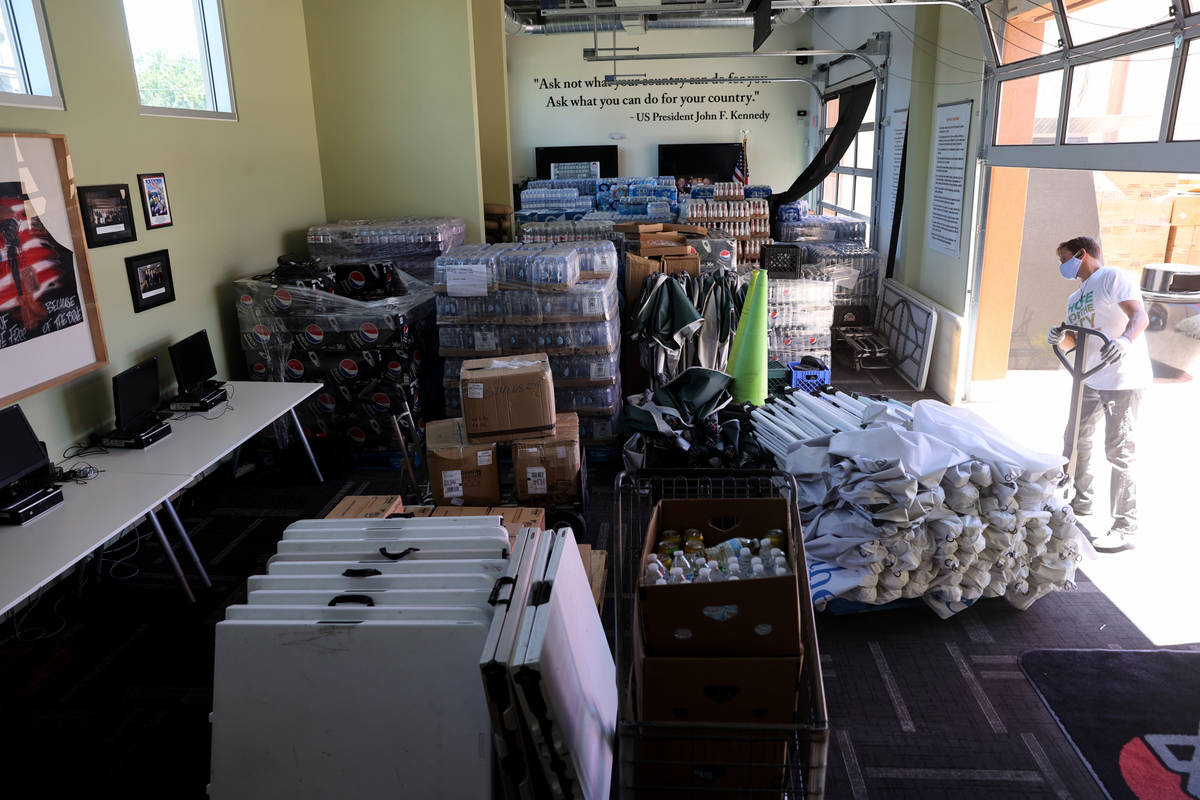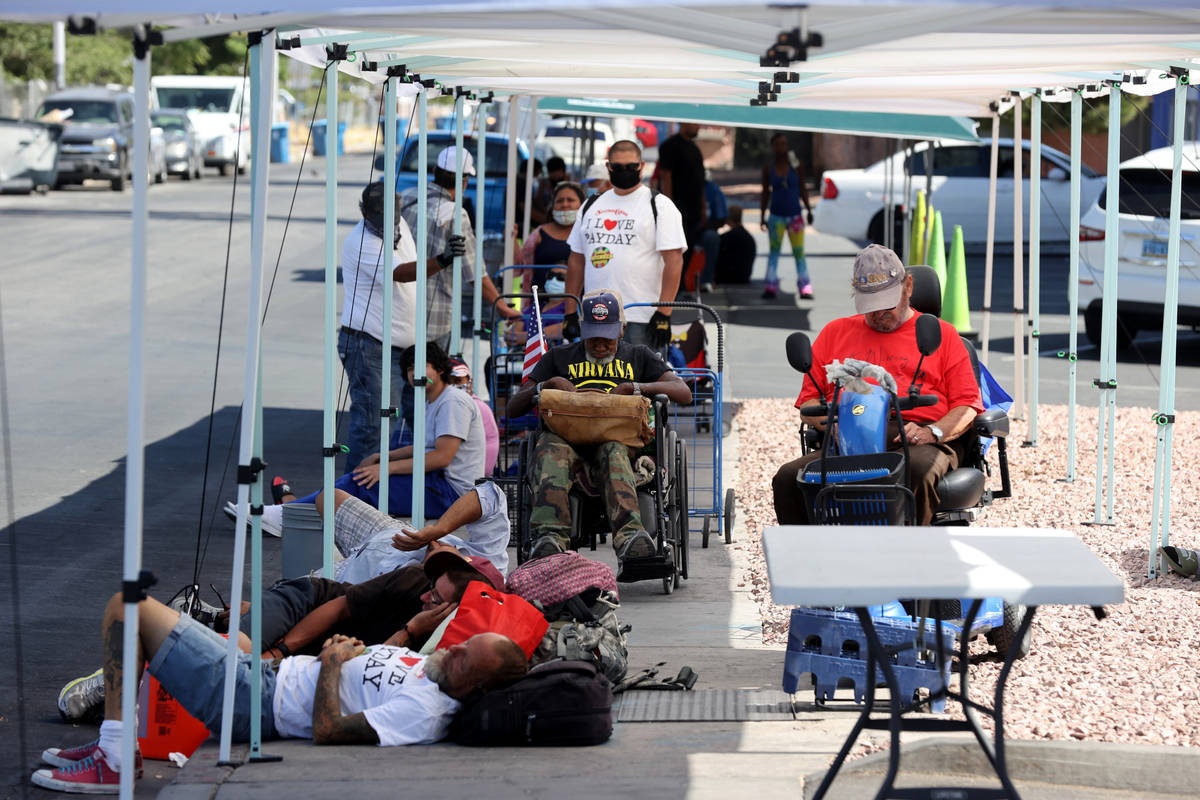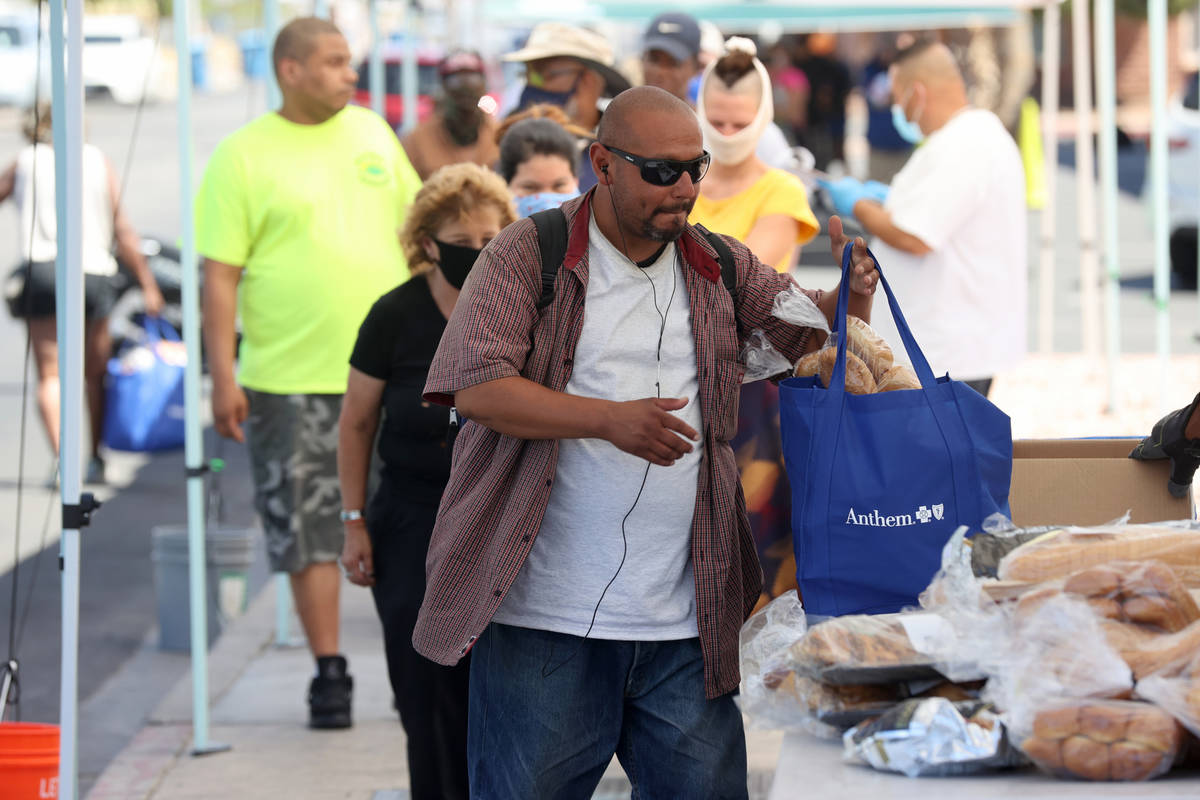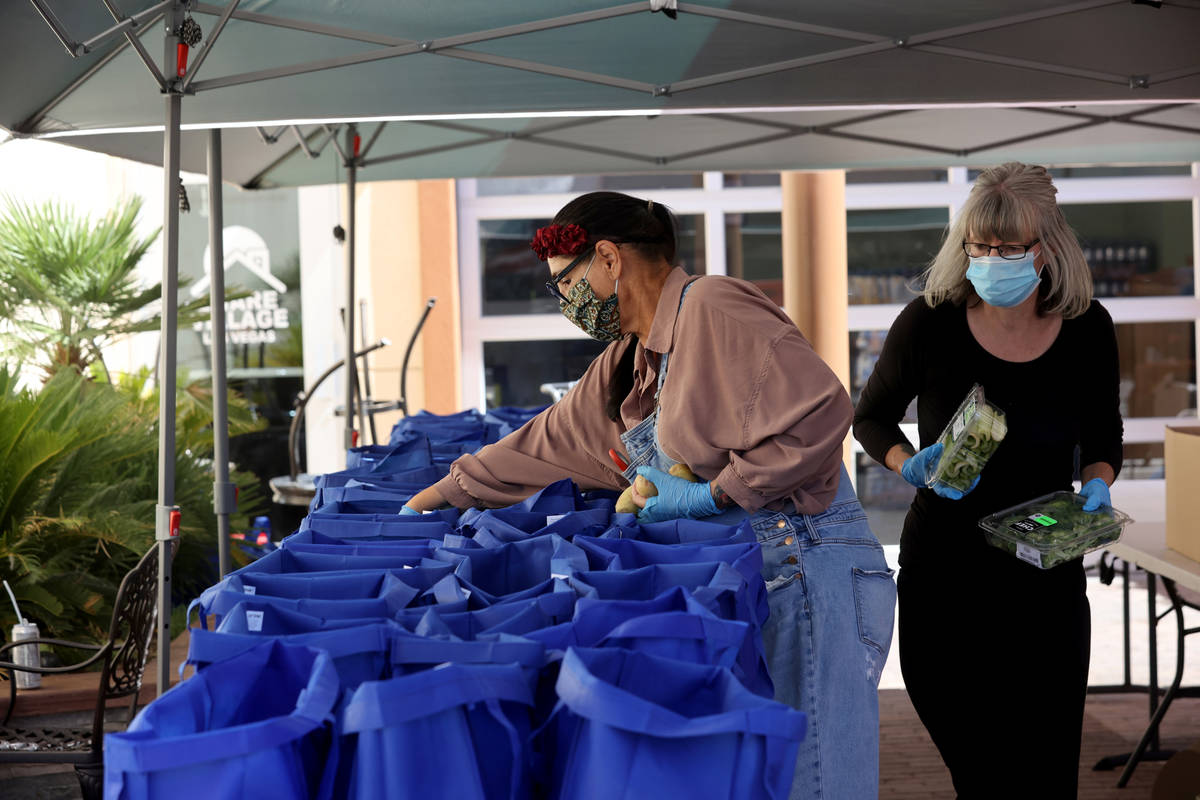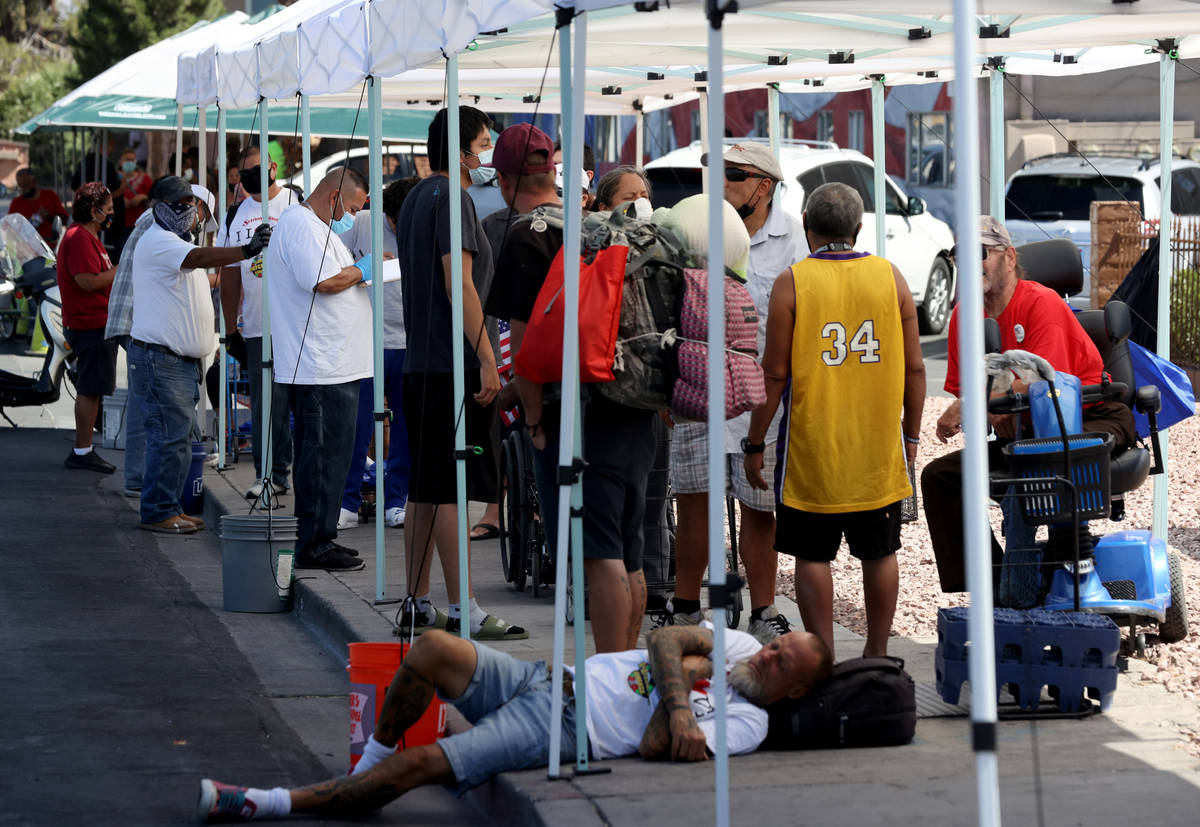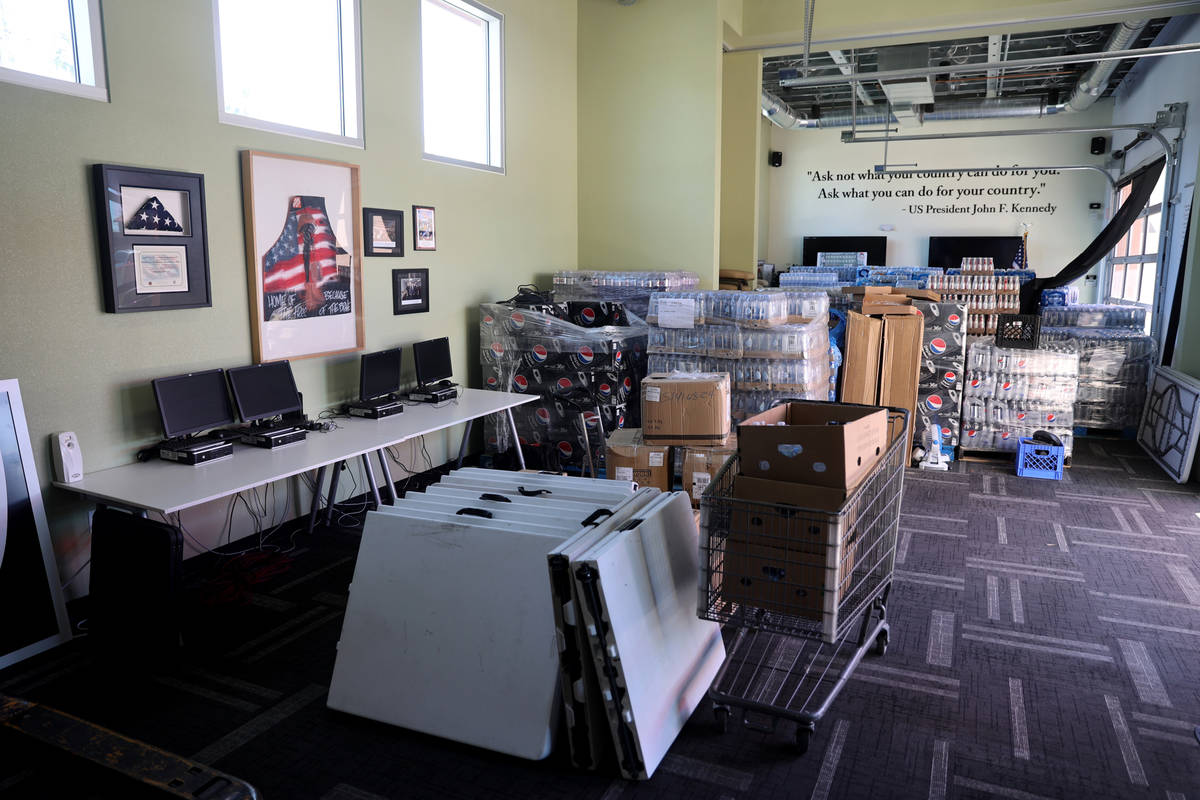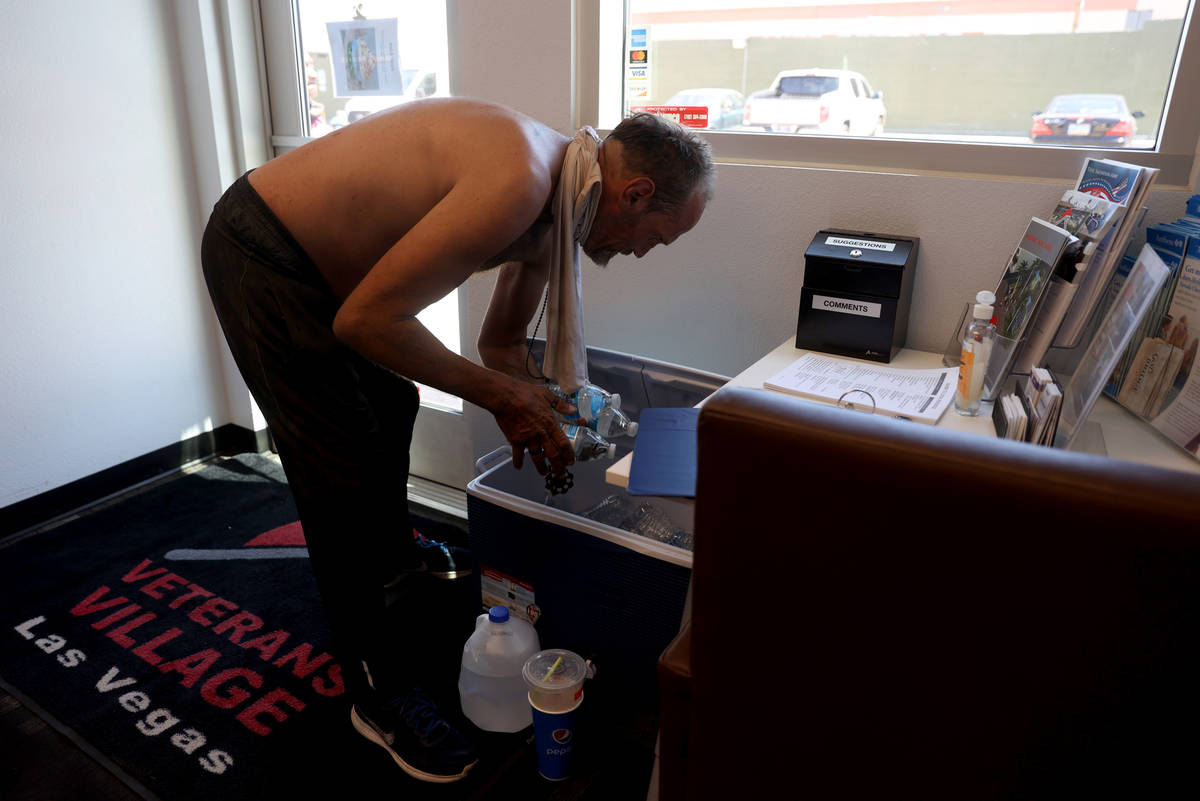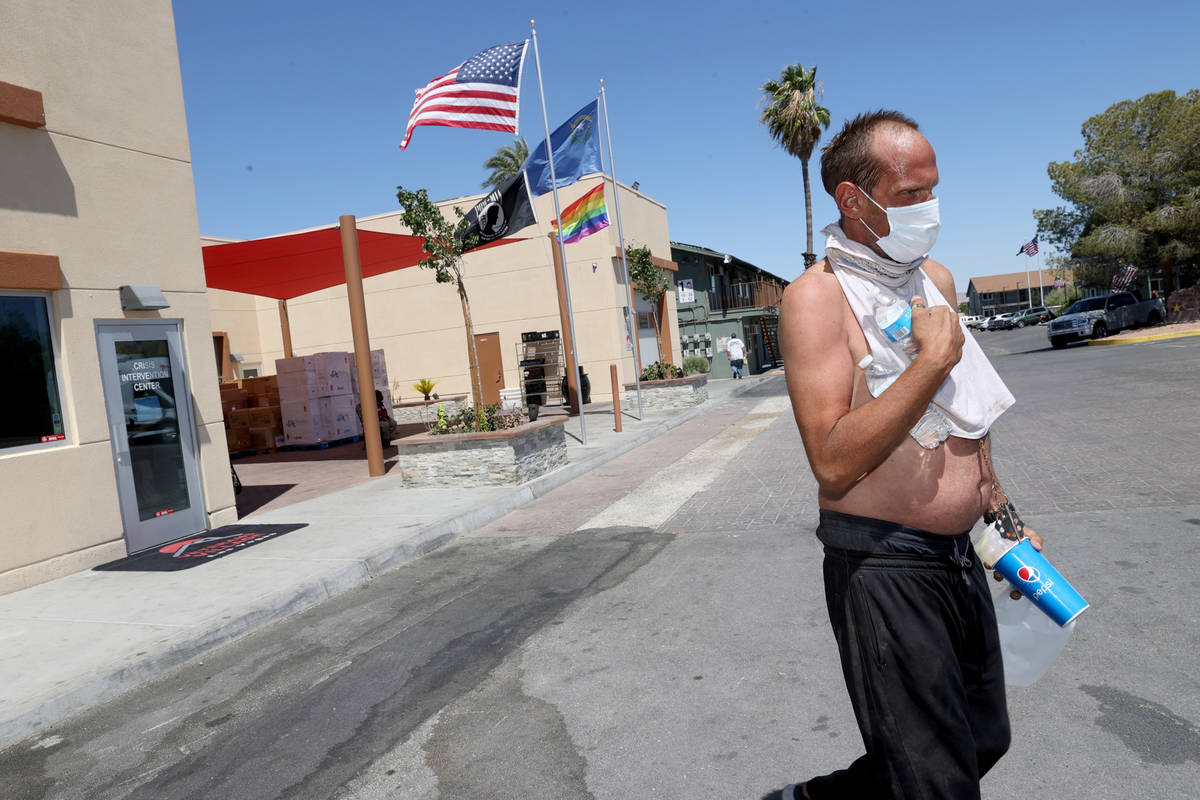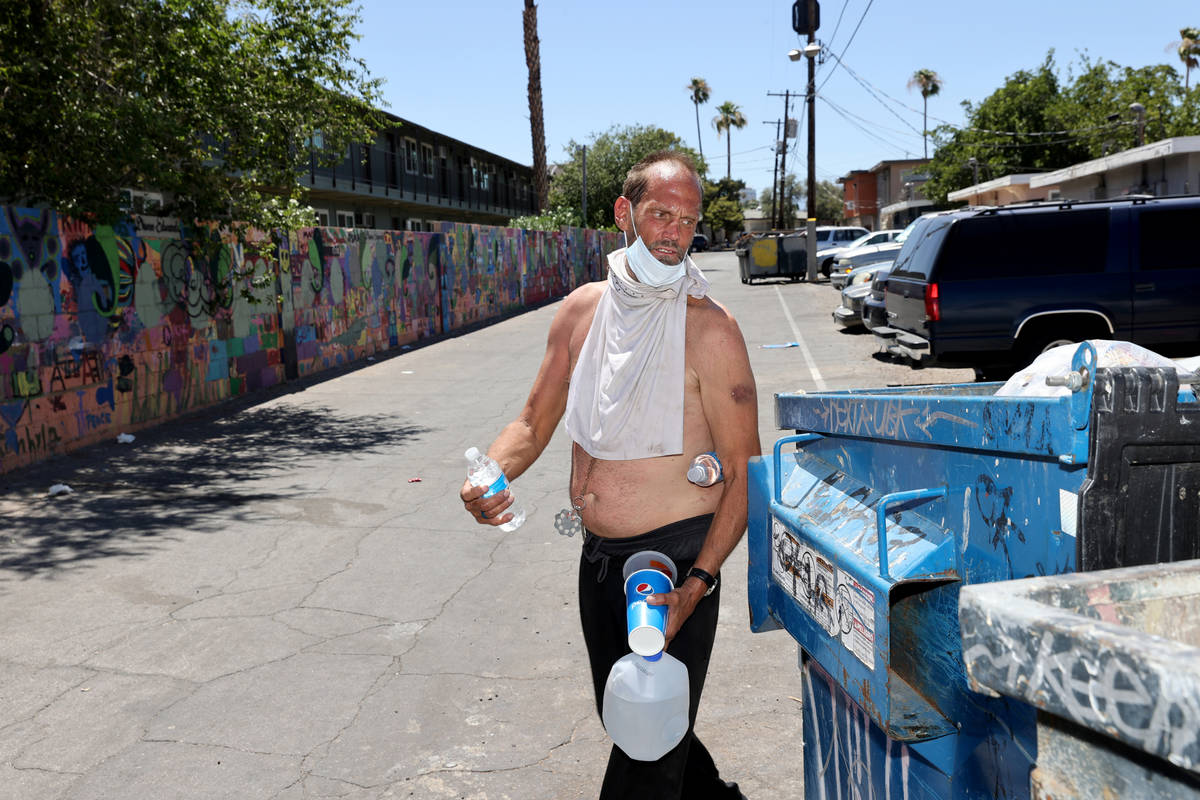Heat and virus bring a double threat to vulnerable populations
COVID-19 may add to another danger this summer — heat — making vulnerable people more susceptible to illness and possible death.
Communities without access to air conditioning may be forced to choose between heat exposure — or exposure to the coronavirus in cool, public spaces such as malls, office buildings, theaters and cooling stations.
And with many of those spaces closed now, options for heat relief are limited. Also, the loss of income for many leaves fewer options for transportation and the ability to pay utility bills.
The fear of exposure may prevent people from seeking the help they need to avoid heat-related illnesses, Clark County Coroner John Fudenberg said.
“Now’s the time to make sure that you’re checking on loved ones who may be elderly or in a vulnerable population, and make sure that their air conditioner is working, they’re staying hydrated and that you’re looking out for people most in need,” he added. “I am very concerned that we may have additional heat-related deaths.”
Excessive heat warnings are out for Las Vegas Saturday morning through Monday night. Temperatures are expected to exceed 110 degrees. The COVID-19 positivity rate in Nevada continues to rise as well.
The dry heat of the Nevada desert and low humidity are dangerous because of the body’s rapid loss of water because of excessive sweating, which causes dehydration.
That can lead to heat-related illnesses such as heat exhaustion, heatstroke, cramping and heat rash. If not treated quickly, heat exhaustion and heatstroke can lead to death. Heat can also worsen underlying health conditions, such as cardiovascular disease or respiratory illnesses.
There were 437 heat-related deaths in Las Vegas from 2007 to 2016, according to a 2019 study by the Desert Research Institute. There were more than 123 heat-related deaths in Clark County in 2017, according to the Southern Nevada Health District.
However, those numbers might be a gross underestimation, according to a new study.
Authors of a new study in the Journal of Environmental Epideology suggest that the number of deaths caused by heat each year in the U.S. reaches into the thousands, not hundreds as previously thought. That is likely because of the fact that it is sometimes difficult to tell when heat complicates a previously existing condition, leading to death.
The researchers examined historical data of 297 counties nationwide from the National Center for Health Statistics.
Lead author Kate Weinberger said the coronavirus adds a concern. “A key element of the public health response to heat in many communities is to open publicly accessible, air-conditioned spaces on extremely hot days. However, these spaces — which are particularly important for individuals who do not have air conditioning in their homes — may provide an environment for COVID-19 transmission.”
Patrick Foley, assistant fire chief for Clark County, said he thinks Las Vegans can manage the COVID-19 crisis easier than managing the heat crisis.
“If you have to go to a place that is congested with people, you as a person can take precautions by wearing your mask, trying to socially distance, having hand sanitizer available and washing your hands.”
Signs of heat sickness include feeling ill, dizzy or confused, muscle cramps, extreme thirst, increased heart rate, and nausea or vomiting, Foley said.
Earlier this year, Clark County promoted four cooling stations in response to triple-digit heat in the Las Vegas Valley.
The stations are meant to supplement existing public spaces people can go to seek refuge from the heat.
Arnold Stalk, founder of one of the stations, Share Village, said that they are a 24-hour-a-day hydration and nutrition station that is open year-round, even when not advertised by the county.
“If you’re hungry, need water, a job, medical attention and/or housing, call us. If we don’t have it, we will immediately refer for people to those that do,” he said.
New coronavirus protocols are in place. To spend time at Share Village and other cooling stations, valley residents must agree to wearing masks and must follow social distancing measures.
Since the pandemic began, Share Village has seen a 500 percent increase in resource distribution, Stalk said, including providing a space to escape the heat. The demand for food items is so high now that resources must be stored in the multipurpose room that also acts as the cooling center, reducing space for those in need to properly social distance while cooling down.
Las Vegas as urban heat island
Las Vegas is one of many cities in the Southwest that are urban heat islands. The concrete, asphalt and air-conditioning needs can cause Las Vegas to be hotter than surrounding rural areas.
Ladd Keith, assistant professor at the University of Arizona, said, “We’ve known about the urban heat island effect since 1818. It hasn’t been until recently that cities have really started to take an active role in thinking about how they can plan and design differently to mitigate needs.
“That we even need cooling centers, it’s the admission that we don’t have quality housing for the majority of our population,” said Keith, who worked on heat islands research for the Urban Land Institute.
A senior forecaster at the National Weather Service in Las Vegas said the biggest temperature difference caused by the urban heat island effect is at night. Clay Morgan added that heat stress is cumulative from one day to the next if a person can’t cool down at night.
“If you have 110-degree afternoon, followed by, let’s say, an 85- or even 90-degree night as we have in Las Vegas sometime during heat waves, then your body is still carrying the stress from the previous day and that second day of 110 can do a lot more damage,” Morgan said.
During the summer, the nighttime temperature in the city is 74.6 degrees in June, 80.9 in July and 79.3 in August.
In the more rural Pahrump area, low temperatures are 62.6 in June, 69.5 in July and 67.4 in August.
Protecting vulnerable citizens from the heat will be important as 2020 is on track to be one of the hottest years on record, according to a technical brief by the Global Heat Health Information Network.
Pets and children should not be left unattended in vehicles.
Cooling stations
To seek refuge from the heat, you can visit one of these cooling stations:
— SHARE Village Las Vegas, 50 N. 21st St., open 24 hours a day, 702-222-1680. The facility has a food pantry open from 8 to 9 a.m. and 10 a.m. to noon. Share Village can accommodate up to 10 people in its seating area, six people in its multipurpose room and many more in its covered courtyard area. Individuals seeking shelter are able to stay as long as they need.
— Henderson Downtown Recreation Center, 105 W. Basic Road, 702-267-4040, open 11 a.m. to 6 p.m. With social distancing measures in place, the facility can accommodate up to 65 people. All are welcome to stay as long as they need during operational hours.
— The Salvation Army Mesquite, 742 Pioneer Blvd., Suite D, 702-345-5116, open 8 a.m. to 3 p.m. The facility can accommodate up to six people in its cooling center. Those who need relief can stay as long as they are open.
Earyn McGee is a 2020 Mass Media reporting fellow through the American Association for the Advancement of Science (AAAS). Email her at emcgee@reviewjournal.com. Follow her on Twitter at @Afro_Herper.



